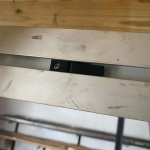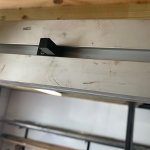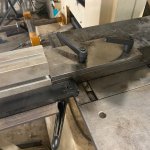Machine Shop BDS
Plastic
- Joined
- Feb 27, 2019
Hey All, we need to punch 3/4" square holes in lengths of aluminum channel 1" x 2" x 20' accurately as we also need to punch a cover plate to match. using our Edwards 55ton ironworker,
As I mentioned it needs to be accurate if each position is out by .0002" that could add up to an 1/8" misalignment on the last hole.
This tiger stop https://www.tigerstop.com/products/tigerstop/ would be perfect but its way out of my budget
I'm thinking of a tapered locator to hold the position on each cycle, wondering if any of you may have built or seen a good method or tool available.
Thanks in advance
Regards Chris
As I mentioned it needs to be accurate if each position is out by .0002" that could add up to an 1/8" misalignment on the last hole.
This tiger stop https://www.tigerstop.com/products/tigerstop/ would be perfect but its way out of my budget
I'm thinking of a tapered locator to hold the position on each cycle, wondering if any of you may have built or seen a good method or tool available.
Thanks in advance
Regards Chris







